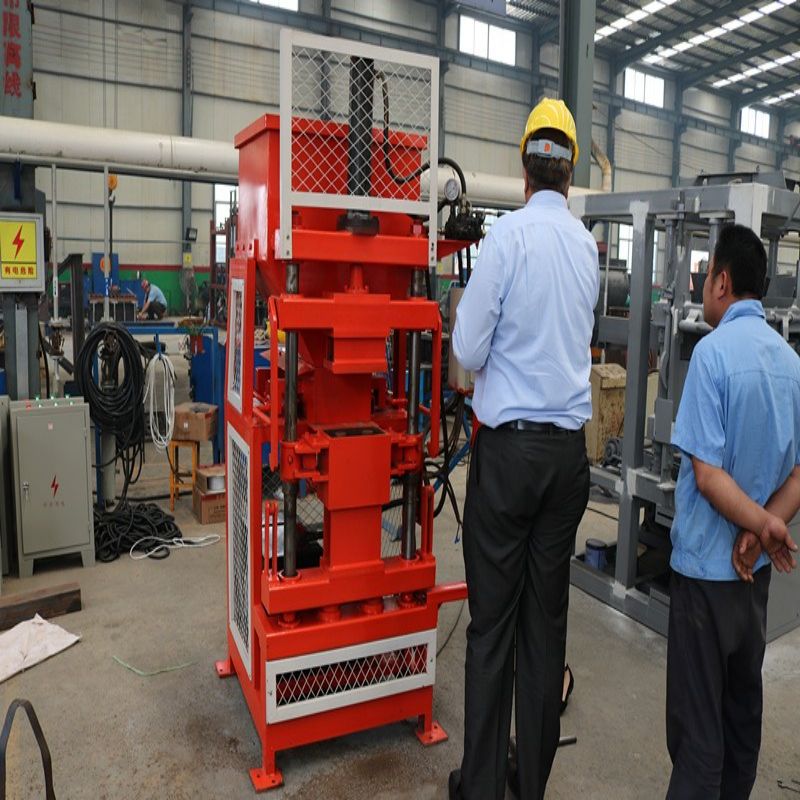
Image source:Aiweiblockmachine
Introduction
In the rich tapestry of Indian construction practices, traditional clay block production stands as a testament to the age-old wisdom and sustainable ethos deeply ingrained in the country’s heritage. While modern construction technologies have gained prominence, manual methods of clay block production continue to thrive in various parts of India. This article delves into the intricacies of traditional clay block production in India, exploring the manual methods employed, the cultural significance of clay blocks, and their alignment with contemporary sustainability goals.
1. The Historical Legacy of Clay Blocks in India
Architectural heritage: India boasts a diverse architectural heritage, from ancient temples to intricately designed havelis, many of which feature clay blocks in their construction.
Sustainable construction: Traditional clay blocks have been used for centuries due to their natural abundance, low environmental impact, and thermal insulation properties.
2. The Manual Artistry of Clay Block Making
Clay selection: Skilled artisans select the right type of clay, typically sourced locally, ensuring it is well-suited for block production.
Mixing and tempering: The clay is mixed with water, straw, or other reinforcing materials and left to temper for improved strength and workability.
Molding and shaping: Artisans manually mold the clay into blocks using wooden or metal molds, paying close attention to size and shape.
Drying process: The formed clay blocks are sun-dried, a process that can take several days, depending on weather conditions.
3. The Cultural Significance of Clay Blocks
Architectural marvels: Clay blocks have played a pivotal role in the construction of iconic structures like the temples of Khajuraho and the havelis of Rajasthan.
Artistic expression: Clay block artisans often incorporate intricate designs and motifs into their work, making each block a piece of art.
4. Sustainability and Clay Blocks
Low environmental impact: Clay is an abundant and renewable resource, and the manual production of clay blocks has a minimal ecological footprint.
Energy efficiency: Clay blocks possess natural thermal insulation properties, reducing the need for energy-intensive heating or cooling systems in buildings.
Recycling and reusability: Damaged clay blocks can be recycled or used as a foundation for new constructions, minimizing waste.
5. Challenges and Preservation Efforts
Modernization pressures: The advent of modern construction materials and techniques has led to a decline in traditional clay block production.
Skills preservation: Efforts are underway to preserve the traditional knowledge and skills associated with clay block production through training and workshops.
6. Case Studies: Contemporary Applications
Eco-friendly architecture: Architects and builders in India are rediscovering the value of clay blocks in sustainable and eco-friendly building projects.
Restoration and conservation: Clay blocks are used in the restoration and conservation of historical structures, preserving the authenticity of the past.
7. Future Prospects
Sustainable resurgence: As sustainability gains importance in the construction industry, traditional clay block production may experience a revival.
Technological integration: Innovations in manual block-making machinery can enhance efficiency while retaining the charm of traditional craftsmanship.
Conclusion
Traditional clay block production in India represents an enduring legacy of sustainable construction practices deeply rooted in the country’s culture and history. While modern construction materials and methods have gained ground, the relevance of manual clay block production persists, especially in the context of sustainability and eco-friendly architecture. As India looks to balance its rich heritage with contemporary needs, the traditional artistry of clay block making serves as a reminder of the enduring power of sustainable practices in construction.
